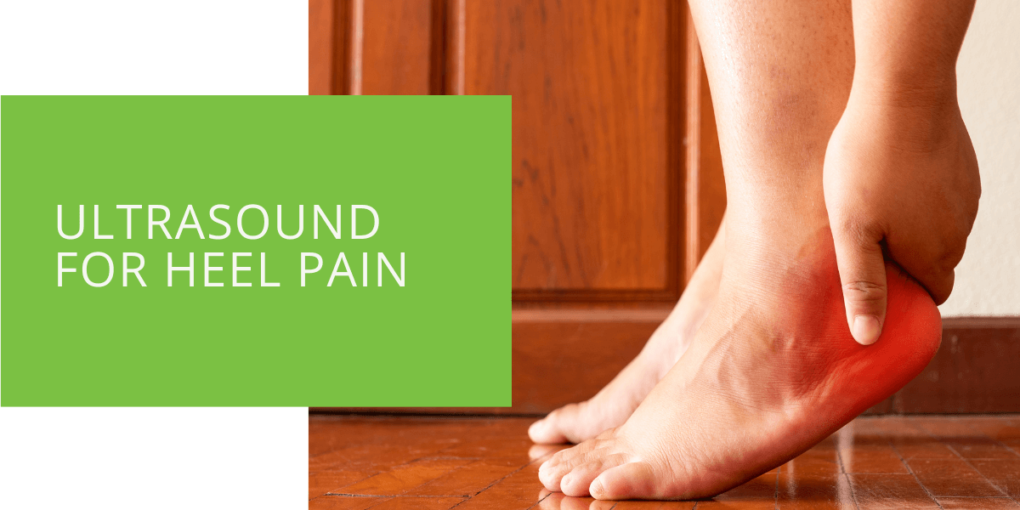Ultrasound for Heel Pain
Ultrasound therapy is a non-invasive treatment option that can reduce pain and inflammation in the feet, particularly in the heels. It involves using high-frequency sound waves to produce heat in the affected area, improving blood flow and promoting healing. If you suffer from chronic heel pain, such as plantar fasciitis, you may want to talk to a healthcare professional, such as a podiatrist, about the possibility of ultrasound therapy. This article will delve into how ultrasound therapy works, its benefits for foot pain, and the risks and precautions to consider before starting treatment.
What is Ultrasound Therapy?
Ultrasound therapy is a type of physical therapy that uses high-frequency sound waves to produce heat in the body. It is a non-invasive treatment option often used to reduce pain, swelling, and inflammation in the muscles, joints, and other soft tissues. Ultrasound therapy is administered using a handheld device called a transducer, placed on the skin over the affected area. As the transducer is moved over the skin, it produces sound waves that penetrate the tissue beneath the surface. These sound waves cause the tissue to vibrate, making heat. The heat produced by ultrasound therapy can help increase blood flow to the affected area, promoting healing and reducing inflammation.

Benefits of Ultrasound Therapy for Foot Pain
There are several benefits to using ultrasound therapy for foot pain, particularly in the heels. First and foremost, it is a non-invasive and painless treatment option. This contrasts with more invasive procedures, such as surgery, which can be painful and require a lengthy recovery. Ultrasound therapy can also be used with other treatment options, such as stretching exercises or physical therapy, to provide more comprehensive pain relief.
In addition, ultrasound therapy has been shown to reduce inflammation and swelling. This can be especially helpful for people with chronic heel pain because of conditions like plantar fasciitis. The plantar fascia is a thick band of tissue that runs along the bottom of the foot, and it can become strained or inflamed, causing pain in the heel and arch. Ultrasound therapy can help improve blood flow to the affected area, aiding healing.
How is Ultrasound Therapy Administered?
Ultrasound therapy is typically administered by a healthcare professional, such as a physical therapist or podiatrist. During a treatment session, the healthcare professional will apply a conductive gel to the skin over the affected area. The gel helps to facilitate the transmission of the sound waves produced by the transducer. The transducer is then placed on the skin and moved over the affected area in a circular motion. Treatment sessions typically last for 15-30 minutes. The number of treatment sessions will depend on the patient's response to treatment and the severity of the pain.

Risks and Precautions
There are few risks associated with ultrasound therapy, and it is generally considered a safe treatment option. However, there are a few precautions to consider. Pregnant women should not receive ultrasound therapy, as the sound waves may harm the developing fetus.
Additionally, people with pacemakers should not receive ultrasound therapy, as the sound waves may interfere with the functioning of the pacemaker. It is also important to note that ultrasound therapy may not be effective for everyone and may not provide complete pain relief in all cases. It is always important for patients to consult with a doctor or podiatrist before any new treatment regimen is started and to follow their care recommendations.
Conclusion
Ultrasound therapy is a safe and effective treatment option for foot pain, particularly in the heels, that can be administered by a healthcare professional, such as a podiatrist. It can be used with other treatments to provide comprehensive pain relief and promote healing.
If you are suffering from chronic heel pain, such as plantar fasciitis, it may be worth discussing the possibility of ultrasound therapy with a healthcare provider to find out if it is the proper treatment for you. Note that ultrasound therapy may not be suitable for everyone and may not provide complete pain relief in all cases. It is always important to consult a healthcare professional and follow their care recommendations.
FAQ
What is ultrasound therapy?
Ultrasound therapy is a type of physical therapy that uses high-frequency sound waves to produce heat in the body. It is a non-invasive treatment option often used to reduce pain, swelling, and inflammation in the muscles, joints, and other soft tissues.
How does ultrasound therapy work?
During an ultrasound therapy treatment, a healthcare professional, such as a physical therapist or physician, will use a handheld device called a transducer to produce sound waves applied to the skin over the affected area. The sound waves cause the tissue beneath the surface to vibrate, which produces heat. The heat can help increase blood flow to the affected area, promoting healing and reducing inflammation.
What are the benefits of ultrasound therapy?
Ultrasound therapy is a non-invasive and painless treatment option that can reduce pain, swelling, and inflammation in the body. It can be used with other treatments, such as stretching exercises or physical therapy, to provide more comprehensive pain relief. Additionally, ultrasound therapy is effective at improving blood flow to the affected area, which can aid in the healing process.
Is ultrasound therapy safe?
Ultrasound therapy is generally considered a safe treatment option with few risks. However, pregnant women should not receive ultrasound therapy, as the sound waves may harm the developing fetus. Additionally, people with pacemakers should not receive ultrasound therapy, as the sound waves may interfere with the functioning of the pacemaker.
Can ultrasound therapy be used to treat all types of foot pain?
Ultrasound therapy is often used to treat pain and inflammation in the feet, particularly in the heels. However, it may not be effective for everyone and may not provide complete pain relief in all cases. It is always important to consult with a healthcare professional, such as a physician or podiatrist, to determine the most appropriate treatment option for your specific needs and goals.
How often do I need to receive ultrasound therapy?
The frequency of ultrasound therapy sessions will depend on the severity of your foot pain and your response to treatment. Your healthcare professional can recommend the appropriate treatment plan for you.
Is ultrasound therapy a new or experimental treatment option?
Ultrasound therapy has been a treatment option for pain and inflammation for several decades. While the technology continues to advance, it is no longer considered experimental and is widely used in clinical settings by healthcare professionals.

